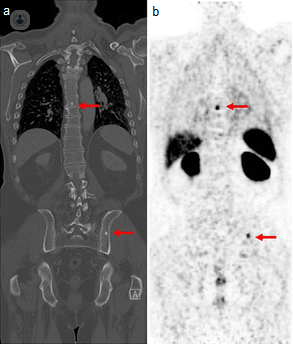


What is gammagraphy?
Gammagraphy is an imaging technique that forms the basis of nuclear medicine. It uses special cameras that detect gamma rays to capture images of the inside of the patient’s body by tracing radioactive materials administered by the doctor as they pass through the body.
What does gammagraphy involve?
Radioactive materials are given to the patient in tiny doses so as not to harm them. These radiotracers give off gamma radiation. Gammagraphy involves using gamma cameras to detect these radiotracers and uses them to create images of the inside of the patient. The images are known as gammagraphs.
Why is it done?
Gammagraphy is a key part of nuclear medicine. It can be used to diagnose various conditions and examine the structure and function of many different parts of the body, including the heart, brain, lungs, and kidneys. It may be used to assess if the patient’s organs or tissues are healthy enough to undergo a certain operation or to assess if they need one.
One major use is in finding cancer and assessing the stage and extent of it. It is also used to assess issues with the thyroid gland and the bones.
Preparation for gammagraphy
Due to the radiation involved, it is essential to inform your doctor if there is a chance you might be pregnant. You should also let them know about any allergies or pre-existing medical conditions you have.
Before the scan, you will have to remove all jewellery – it may be best to leave it at home.
Some scans may require you to follow strict instructions from the doctor about eating and drinking in the 24 hours leading up to the test.
What to expect during gammagraphy
While the procedure is usually painless, it can take a long time to finish the imaging procedure, depending on the part of the body being scanned, the condition being scanned for, and the type of radiotracer used. Some scans may be complete in seconds, while others take hours, and some tests may require repeated scanning over a few days.
